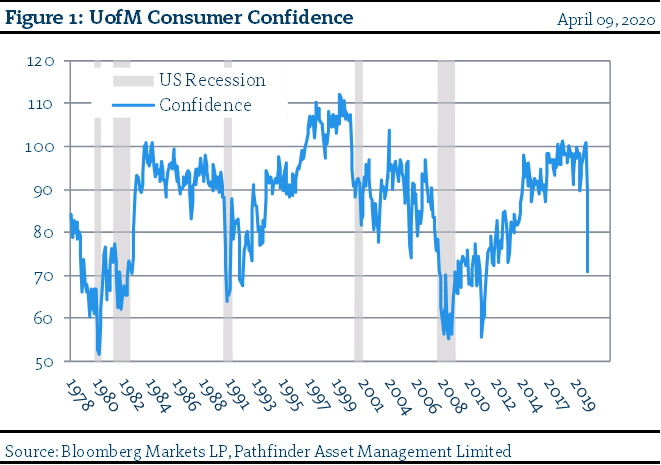China as a Touchstone
Last week, we wrote that we believed trading volatility had settled down. Indeed, we noted on Friday that “from the perspective of our trade desk, markets are beginning to function more normally”. Two days later (on Tuesday!) the Dow Jones was up over 4% at the open and ultimately closed down on the day, an intraday swing that has only happened once since 1925 (during the GFR in Oct. 2008). This demonstrates how hard it is to make predictions about short-term market behavior and why we continually reiterate to clients and readers that it is so important to focus on investment process, rather than the “daily torrential noise” from the media that flows to investors and the general public.
We saw some encouraging events in China this week that started a debate in our now “Daily Desk Calls”. First was video of Wuhan “opening up” and letting people leave the city for the first time in 76 days. The second was a near 100% re-opening rate of essential business at the direction of the Chinese government. The debating point is that while industry seems to be restarting, demand and consumption remains slow to come back (retail sales, traffic and power consumption are all approximately 15-25% below last year’s numbers). It seems that the average person is unable to, or is less interested in, returning to previously normal consumption activity (i.e. discretionary shopping, travelling and purchases). This, to me, is completely rational behavior after such a traumatic event, and I wonder how long it will sustain. I also wonder how it will translate into other parts of the world that are now experiencing the peak of what Wuhan went through 2 months ago.
- Figure 1 presents US consumer confidence data, which has reached a major low, and is only just starting (our opinion). The consumer is 67% the US economy, while in China it is just 39%. Indeed, confidence in the US “getting back to normal” is critical to our collective economies.

“This means that” the data that we have highlighted above, with respect to China, is a warning to the rest of the world. While there is rightly fair criticism, in our opinion, for how China managed its initial reaction to the infection at the start of its outbreak, it certainly did an amazing job afterward with mitigation management. If China, with a centrally planned economy and good mitigation management, is struggling to restart, how will the Western world’s economies react? Unfortunately, we fear the illness will last longer here and our economies will be slower to recover, thus prolonging the impact. We expect more financial market volatility.
National Instrument 31-103 requires registered firms to disclose information that a reasonable investor would expect to know, including any material conflicts with the firm or its representatives. Doug Johnson and/or Pathfinder Asset Management Limited are an insider of companies periodically mentioned in this report. Please visit www.paml.ca for full disclosures.
*All returns are time weighted and net of investment management fees. Returns from the Pathfinder Partners’ Fund and Pathfinder Real Fund are presented based on the masters series of each fund. The Pathfinder North American Equity Portfolio and The Pathfinder North American Income Portfolio are live accounts. These are actual accounts owned by the Pathfinder Chairman (Equity) and client (High Income) which contain no legacy positions, cash flows or other Pathfinder investment mandates or products. Monthly inception dates for each fund and portfolio are as follows: Pathfinder North American Equity Portfolio (January 2011), Pathfinder North American High-Income Portfolio (October 2012) Pathfinder Partners’ Fund (April 2011), Pathfinder Real Fund (April, 2013), and Pathfinder International Fund (November 2014).
Pathfinder Asset Management Limited (PAML) and its affiliates may collectively beneficially own in excess of 10% of one or more classes of the issued and outstanding equity securities mentioned in this newsletter. This publication is intended only to convey information. It is not to be construed as an investment guide or as an offer or solicitation of an offer to buy or sell any of the securities mentioned in it. The author has taken all usual and reasonable precautions to determine that the information contained in this publication has been obtained from sources believed to be reliable and that the procedures used to summarize and analyze such information are based on approved practices and principles in the investment industry. However, the market forces underlying investment value are subject to sudden and dramatic changes and data availability varies from one moment to the next. Consequently, neither the author nor PAML can make any warranty as to the accuracy or completeness of information, analysis or views contained in this publication or their usefulness or suitability in any particular circumstance. You should not undertake any investment or portfolio assessment or other transaction on the basis of this publication, but should first consult your portfolio manager, who can assess all relevant particulars of any proposed investment or transaction. PAML and the author accept no liability of any kind whatsoever or any damages or losses incurred by you as a result of reliance upon or use of this publication.